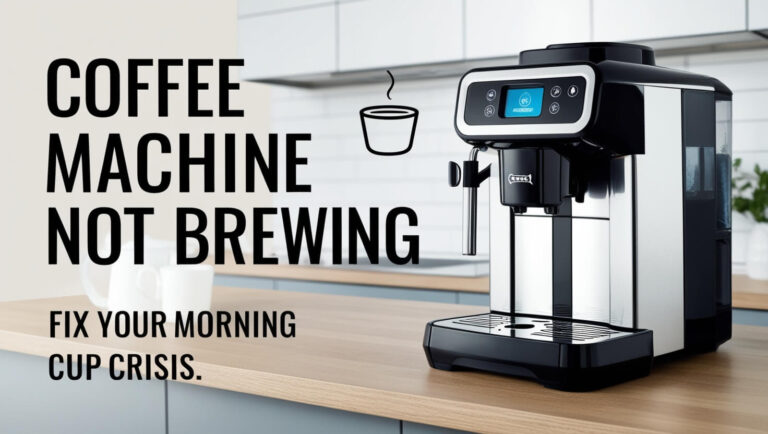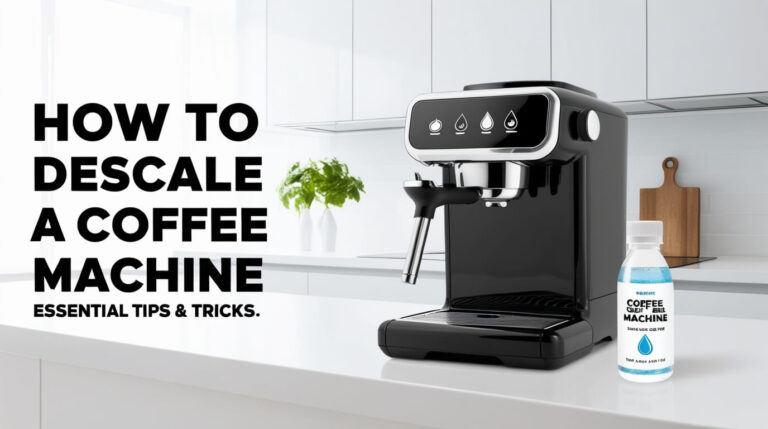
Uh-oh! Your coffee machine’s pump is on the fritz, leaving you caffeine-deprived and frustrated. A faulty pump often stops your coffee maker from brewing, but don’t panic! We’re here to help you fix it.
Think of your coffee machine’s pump as its beating heart. When it stops, so does your morning brew. But before you ditch your beloved coffee maker or run to the local café, let’s figure out what’s wrong and how to fix it.
We’ll uncover why pumps fail, help you spot the problem, and show you how to get things flowing again. Plus, we’ll give you tips to keep your pump healthy, so you can enjoy smooth brewing for years to come. Ready to rescue your morning routine? Let’s dive in!
Coffee Machine’s Pump
How Does a Coffee Machine Pump Work?
At its core, a coffee machine pump is responsible for pushing water through the system. It creates the pressure needed to force hot water through your coffee grounds, extracting those rich flavors and aromas you love.
Most home coffee makers use one of two types of pumps:
- Vibratory pumps
- Rotary pumps
Vibratory pumps are more common in household machines. They use electromagnetic forces to create rapid back-and-forth movements, pushing water through the system. Rotary pumps, often found in high-end or commercial machines, use a motor to drive a rotating mechanism that pressurizes the water.
Signs of a Malfunctioning Pump
How do you know if your pump is the culprit? Look out for these tell-tale signs:
- No water coming out of the group head
- Weak or slow water flow
- Unusual noises during brewing
- Coffee that’s weaker than usual
If you notice any of these symptoms, it’s time to investigate your pump.
Common Reasons for Coffee Machine Pump Failure
Mineral Buildup and Scaling
Hard water is the nemesis of coffee machines. Over time, mineral deposits can accumulate in your pump and water lines, restricting flow and potentially damaging components.
Air Lock in the System
Sometimes, air bubbles get trapped in the pump or water lines. This “air lock” can prevent water from flowing properly, even if your pump is working fine.
Clogged or Damaged Impeller
The impeller is a key part of your pump that moves water through the system. If it gets clogged with debris or wears out, your pump’s performance will suffer.
Electrical Issues
Like any electrical appliance, coffee machines can experience power supply problems. A faulty connection or damaged wiring could be preventing your pump from running.
Worn Out Pump Components
Nothing lasts forever, and pump parts are no exception. Over time, valves, seals, and other components can wear out, leading to reduced performance or complete failure.
Troubleshooting Your Coffee Machine’s Pump
Before you break out the toolbox or call a repair service, try these troubleshooting steps:
Checking for Power Supply Issues
First, ensure your machine is properly plugged in and the outlet is working. It sounds simple, but you’d be surprised how often this is the problem!
Inspecting Water Reservoir and Lines
Check that your water reservoir is filled and properly seated. Look for any kinks or blockages in visible water lines.
Listening for Unusual Noises
Turn on your machine and listen carefully. A working pump should make a steady humming or vibrating sound. If you hear grinding, rattling, or no sound at all, you may have a pump problem.
Testing Water Flow
Try running a brew cycle without coffee grounds. If water flows freely, your pump might be fine, and the issue could be with your coffee grind or filter.
How to Fix a Coffee Machine Pump That’s Not Working
Descaling Your Coffee Machine
Descaling is often the magic fix for pump problems. Here’s how to do it:
- Mix equal parts water and white vinegar (or use a commercial descaling solution).
- Fill your water reservoir with this mixture.
- Run several brew cycles without coffee.
- Rinse by running a few cycles with clean water.
This process helps remove mineral buildup that could be affecting your pump’s performance.
Priming the Pump
If your machine has been sitting unused or you’ve just descaled, the pump might need priming. Here’s how:
- Fill the water reservoir.
- Place a cup under the group head.
- Run the pump for 30 seconds to a minute.
- Repeat if necessary until water flows steadily.
This helps remove any air locks in the system.
Cleaning or Replacing the Impeller
If you’re comfortable opening up your machine, you can try cleaning the impeller:
- Unplug the machine and let it cool completely.
- Remove the casing to access the pump.
- Carefully remove the impeller.
- Clean it with a soft brush and warm, soapy water.
- Reinstall and reassemble your machine.
If the impeller is damaged, you may need to replace it.
Addressing Electrical Problems
Check for any loose connections or damaged wires. If you’re not confident in your electrical skills, it’s best to consult a professional for this step.
When to Replace the Pump
If none of the above solutions work, you may need to replace the pump entirely. This is a more advanced repair that might require professional help, depending on your machine and your DIY skills.
Preventing Future Pump Issues
Regular Maintenance Tips
- Descale your machine every 3-6 months, or more often if you have hard water.
- Clean your machine after each use.
- Run water through the system if you haven’t used the machine for a while.
Using the Right Water
Consider using filtered or bottled water to reduce mineral buildup. Avoid distilled water, as some minerals are actually beneficial for your machine and your coffee’s taste.
Proper Storage and Handling
Store your coffee machine in a dry place and handle it gently. Avoid moving it while it’s running or still hot.
When to Seek Professional Help
Signs It’s Time to Call a Technician
If you’ve tried the above steps and your pump still isn’t working, it’s time to call in the pros. Look for these red flags:
- Electrical issues you’re not comfortable addressing
- Water leaking from the machine
- Visible damage to the pump or other internal components
Choosing a Reliable Repair Service
Look for technicians who:
- Specialize in coffee machine repairs
- Have good reviews and testimonials
- Offer warranties on their work
Don’t be afraid to ask questions about their experience and process.
FAQs About Coffee Machine Pump Problems
Why is my new coffee machine not pumping water?
New machines can sometimes have air locks. Try priming the pump as described earlier. If that doesn’t work, check that all packaging materials have been removed and that the water reservoir is properly seated.
Can I fix a coffee machine pump myself?
Many pump issues can be resolved with simple maintenance like descaling or priming. However, if these don’t work, it’s best to consult a professional, especially if your machine is still under warranty.
How often should I descale my coffee machine?
Most manufacturers recommend descaling every 3-6 months. If you have hard water or use your machine frequently, you might need to descale more often.
What’s the lifespan of a coffee machine pump?
With proper care, a coffee machine pump can last 5-7 years or more. However, this can vary based on the quality of the machine, frequency of use, and maintenance habits.
Is it worth repairing an old coffee machine’s pump?
This depends on the age and value of your machine. If it’s a high-end model or has sentimental value, repairing might be worth it. For older, less expensive models, replacement might be more cost-effective.
The Bottom Line
A coffee machine with a non-working pump can be frustrating, but it’s often a fixable problem. Regular maintenance, proper use, and prompt attention to issues can keep your pump running smoothly for years.
Remember, your coffee machine is an investment in your daily comfort and productivity. Treat it well, and it will reward you with delicious brews every morning. If you’re ever in doubt about a repair, don’t hesitate to consult a professional. After all, there’s nothing quite like the peace of mind that comes with a perfectly functioning coffee machine – and the delicious cup of joe it produces!






